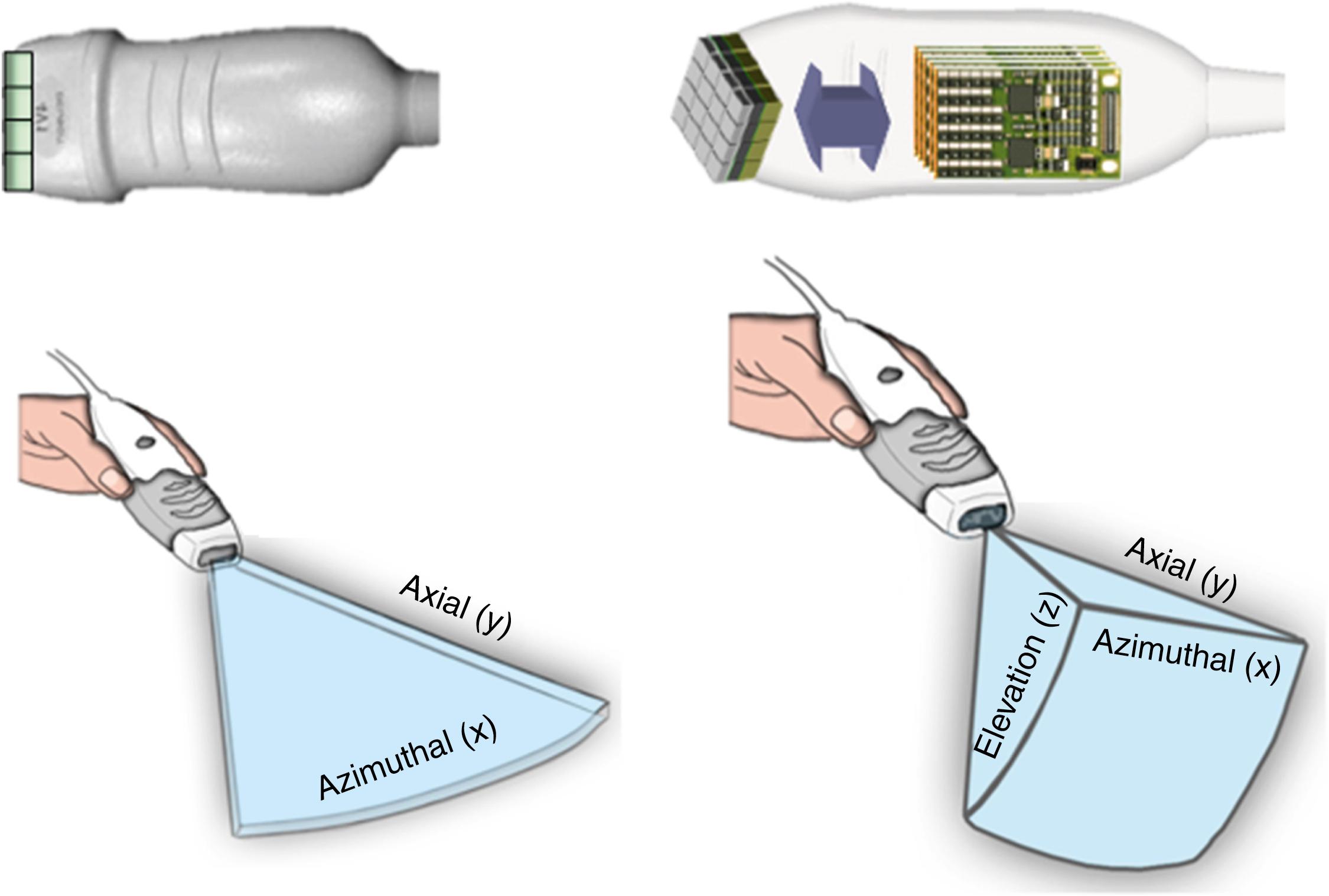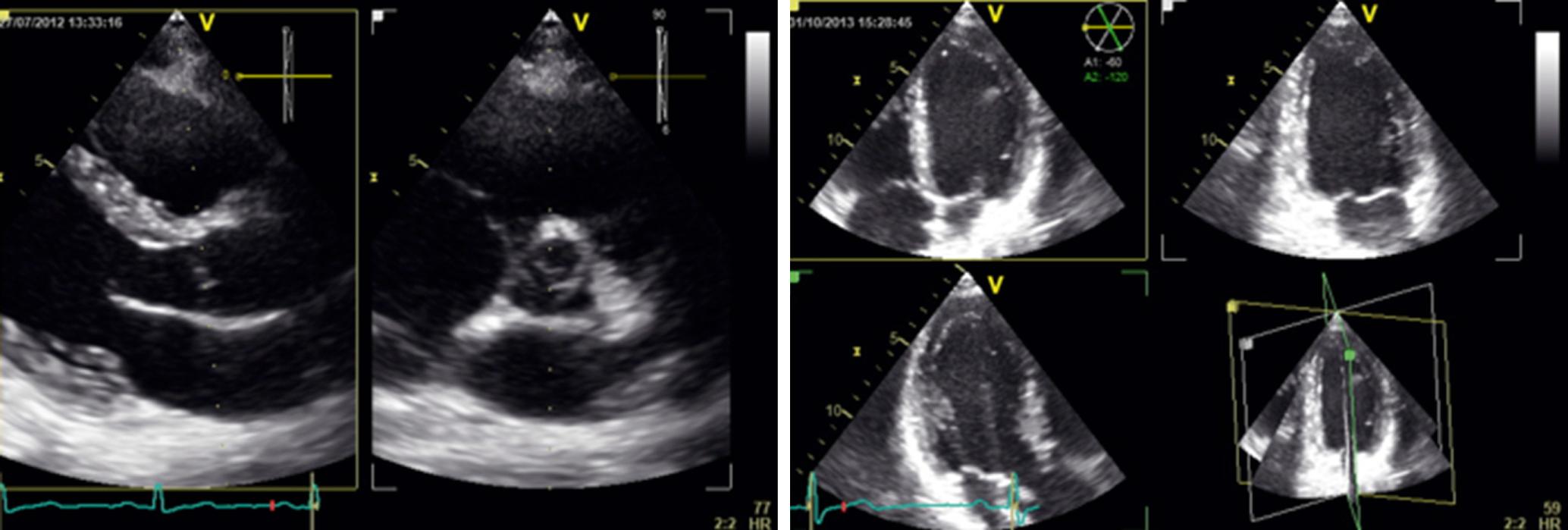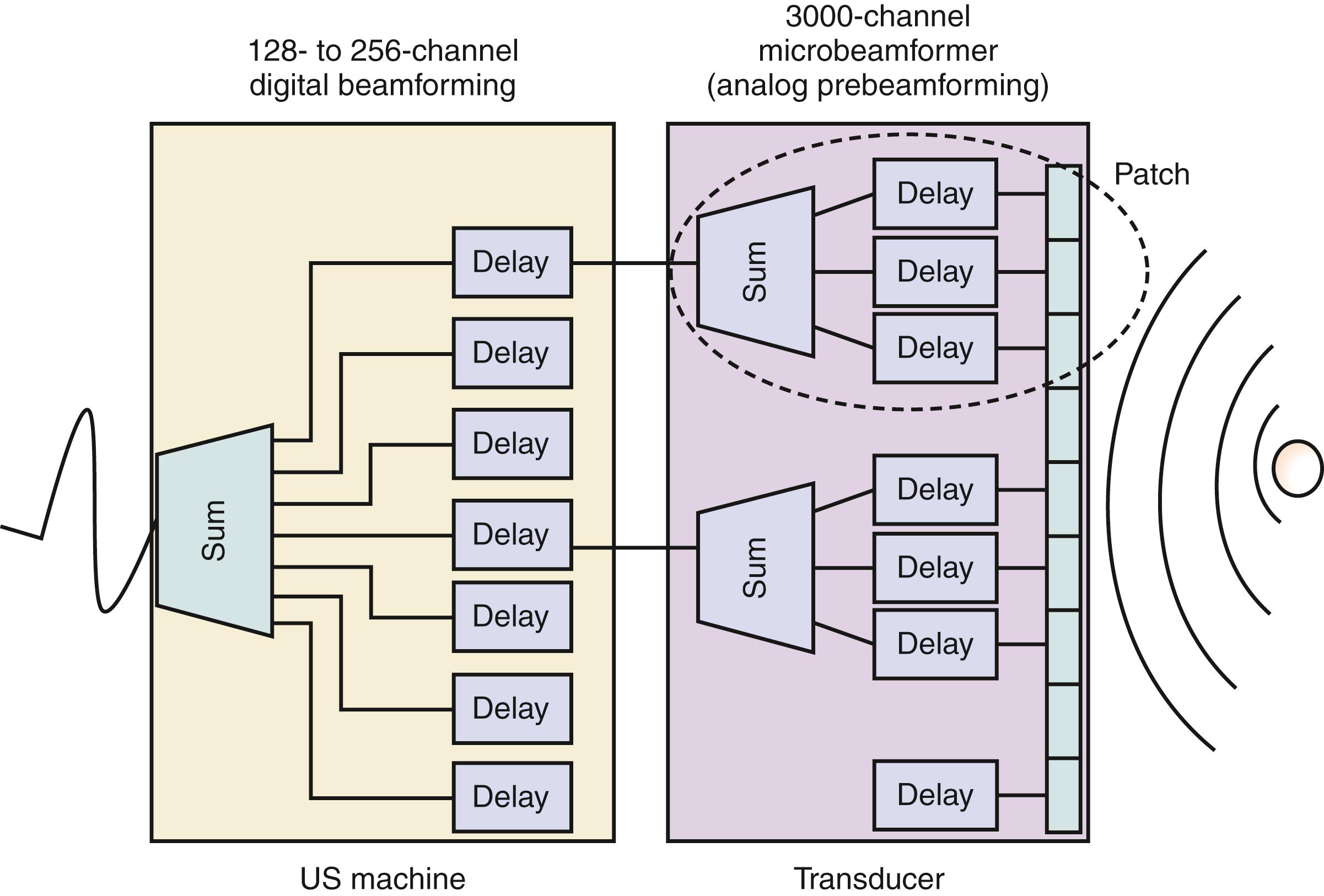Physical Address
304 North Cardinal St.
Dorchester Center, MA 02124
The milestone in the history of three-dimensional echocardiography (3DE) has been the development of fully sampled matrix-array transthoracic transducers based on advanced digital processing and improved image formation algorithms that allowed the operators to obtain on-cart transthoracic real-time volumetric imaging with short acquisition times and high spatial and temporal resolution. Further technological developments (i.e., advances in miniaturization of the electronics and in element interconnection technology) made it possible to insert a full matrix array into the tip of a transesophageal probe for real-time volumetric imaging. In addition to transducer engineering, improved computer processing power and the availability of dedicated software packages for both on- and offline postprocessing have allowed 3DE to become a practical clinical tool.
The backbone of the 3DE technology is the transducer. A conventional two-dimensional (2D) phased array transducer is composed of 128 piezoelectric elements, electrically isolated from each other, arranged in a single row ( Fig. 2.1 ). Ultrasound wave fronts are generated by firing individual elements in a specific sequence with a delay in phase with respect to the transmit initiation time. Each element adds and subtracts pulses to generate a single ultrasound wave with a specific direction that constitutes a radially propagating scan line ( Fig. 2.2 ). Because the piezoelectric elements are arranged in a single row, the ultrasound beam can be steered in two dimensions—vertical (axial) and lateral (azimuthal)—while resolution in the z-axis (elevation) is fixed by the thickness of the tomographic slice, which in turn is related to the vertical dimension of the piezoelectric elements.


Currently, 3DE matrix-array transducers are composed of approximately 3000 individually connected and simultaneously active (fully sampled) piezoelectric elements with operating frequencies ranging from 2 to 4 MHz and 5 to 7 MHz for transthoracic and transesophageal transducers, respectively. To steer the ultrasound beam in 3D space, a 3D array of piezoelectric elements needs to be used in the probe; therefore, piezoelectric elements are arranged in rows and columns to form a rectangular grid (matrix configuration) within the transducer (see Fig. 2.1 , right ). The electronically controlled phasic firing of the elements generates a scan line that propagates radially (y or axial direction) and can be steered both laterally (x or azimuthal direction) and in the elevation plane (z direction) to acquire a volumetric pyramid of data (see Fig. 2.1 , right ). Matrix-array probes can also provide real-time multiple simultaneous 2D views at high frame rates in predefined or user-selected plane orientations ( Fig. 2.3 ). The main technological breakthrough that allowed manufacturers to develop fully sampled matrix transducers has been the miniaturization of electronics that drove the development of individual electrical interconnections for every piezoelectric element, which could be independently controlled, both in transmission and reception.

Beamforming is a technique used to process signals to produce directionally or spatially selected signals sent or received from arrays of sensors. In 2D echocardiography (2DE), all the electronic components for the beamforming (high-voltage transmitters, low-noise receivers, analog-to-digital converter, digital controllers, digital delay lines) are in the system and consume a lot of power (∼100W and 1.500 cm 2 of personal computer electronics board area). If the same beamforming approach would have been used for matrix-array transducers used in 3DE, it would require around 4 kW of power consumption and a huge PC board area to accommodate the needed electronics. To reduce both power consumption and the size of the connecting cable, several miniaturized circuit boards have been incorporated into the transducer, allowing partial beamforming to be performed in the probe ( Fig. 2.4 ). This unique circuit design results in an active probe, which allows micro-beamforming of the signal with low power consumption (<1 W) and avoids the need to connect every piezoelectric element to the ultrasound machine. The 3000-channel circuit boards within the transducer control the fine steering by delaying and summing signals within subsections of the matrix, known as patches (see Fig. 2.4 ). This micro-beamforming allows reduction of the number of the digital channels to be put into the cable that connects the probe to the ultrasound system from 3000 (which would make the cabling too heavy for practical use) to the conventional 128 to 256, allowing the same size of the 2D cable to be used with 3D probes. Coarse steering is controlled by the ultrasound system in which the analog-to-digital conversion occurs using digital delay lines (see Fig. 2.4 ). However, the electronic circuitry inside the probe produces heat, the level of which is directly proportional to the mechanical index used during imaging; therefore, the engineering of active 3DE transducer should include thermal management.

Finally, new and advanced crystal manufacturing processes allow production of single crystal materials with homogeneous solid-state technology and unique piezoelectric properties. These new transducers result in reduced heating production by increasing the efficiency of the transduction process, which improves the conversion of transmit power into ultrasound energy and of received ultrasound energy into electrical power. Increased efficiency of the transduction process together with a wider bandwidth results in increased ultrasound penetration and resolution, which improves image quality with the additional benefits of reducing artifacts, lowering power consumption, and increasing Doppler sensitivity.
Further developments in transducer technology have resulted in a reduced transducer footprint, improved side-lobe suppression, increased sensitivity and penetration, and the implementation of harmonic capabilities that can be used for both grayscale and contrast imaging. The latest generation of matrix transducers are significantly smaller than the previous ones, and the quality of 2D and 3D imaging has improved significantly, allowing a single transducer to acquire both 2D and 3DE studies, as well as having the ability of acquiring the entire left and right ventricular cavity in a single beat.
Become a Clinical Tree membership for Full access and enjoy Unlimited articles
If you are a member. Log in here